#anjou france
Photo
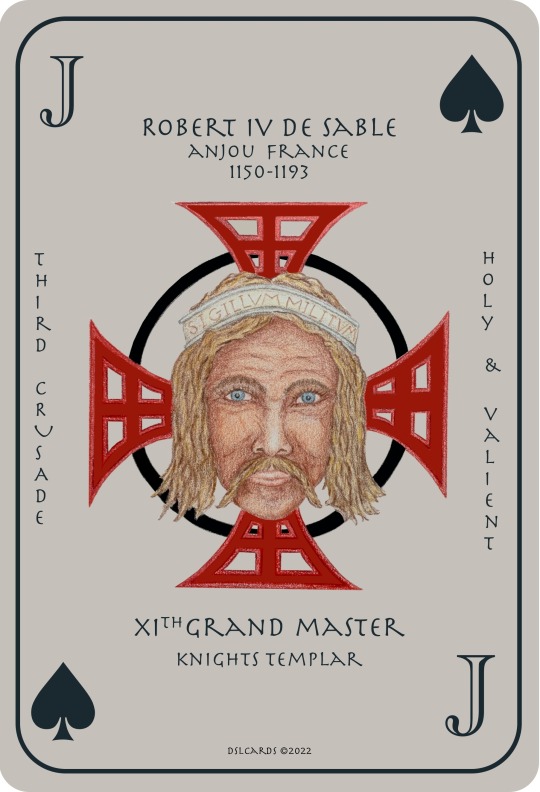
Lord Robert IV de Sable - Knights Templar
Born in Sable, Anjou, France, in the year 1150 AD, Robert de Sable IV was the 11th Grand Master Holy and Valient of the Knights Templar. He was a leader with King Richard's navy during the Third Crusade. In 1191, he helped defeat the army of Saladin at the Battle of Arsuf on the coast of Palastine. Two years later, Robert was killed in aaction. He was 43 years old at the time of his death.
#knights templar#grand master#holy and valient#third crusade#robert de sable#anjou france#medieval times#medieval history#color pencil art#poker cards#playing cards#collector cards#drawing#battle of arsuf#naval history
4 notes
·
View notes
Text
Historical figures that have served as inspiration for the women in ASOIAF - George R.R. Martin interview

Interviewer: What women through history have inspired and helped you on your way to creating these female characters that we love?
George: There are some very interesting queens in both English and French history who have, at least partially, inspired the characters in Game of Thrones. Many people have observed that Game of Thrones is based, in part, on the Wars of the Roses and that is certainly true, although I don't do a one-for-one translation. If you go and say “This character is based on that character” you're gonna be partly right, but also partly wrong, because I like to mix and match and throw a few twists, making the characters my own.
Certainly, the wife of Edward IV, Elizabeth Woodville, was one of the most interesting queens in English history. She was the mother of the princes in the tower and married secretly. She was a Lancastrian, but she married the Yorkist claimant secretly and that produced all sorts of trouble, and she was in the middle of all that stuff with Richard III. She was fascinating!
On the other side, the Lancastrian queen, Margaret of Anjou: she was pretty amazing and definitely hardcore! She was married to the idiot king, Henry VI, and she basically had to command her side after some of the leading Lancastrian supporters were killed in the early parts of the war.
If you go back a hundred years before, Isabella, the wife of king Edward II, the She-Wolf of France, she was a pretty amazing one too. She basically got rid of her husband, imprisoned him, and allegedly had him killed by having a hot poker thrust up his ass while he was in captivity and then she and her lover took over and ran the kingdom until her son Edward III rose up against his own mother and imprisoned her.
All of this stuff, I play with it, but I can't claim to really have invented any of it. There are some things in history that are just as violent and twisted and bizarre and amazing as anything in my books.
- George R.R. Martin, Supanova Expo
#Cersei Lannister#Elizabeth Woodville#Margaret of Anjou#Isabella of France#Female Characters#Inspiration#George R.R. Martin#ValyrianScrolls#ASOIAF
114 notes
·
View notes
Text



Britain's Bloody Crown + Costumes
Margaret of Anjou's green, black & golden dress and red & white coat in Episode 02.
// requested by @garnetbutterflysblog
#Britain's Bloody Crown#Margaret of Anjou#costumes#costume drama#costumesource#period drama#perioddramaedit#1400s#15th century#green#black#gold#red#white#France#Europe#requests
21 notes
·
View notes
Photo
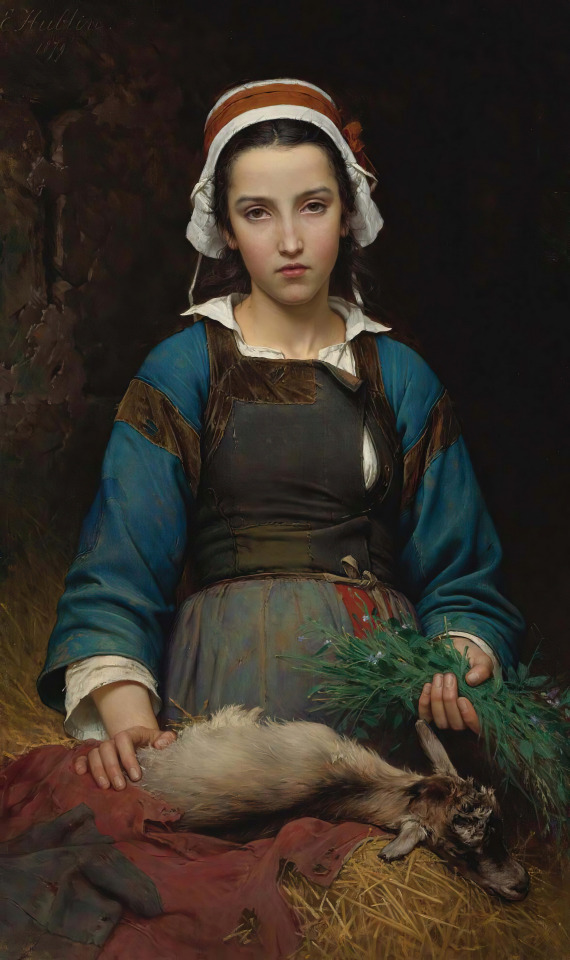
Émile Auguste Hublin (French, 1830 - 1891)
A Friend In Need, 1879
#art#france#french#french art#classical art#european#brunette#woman#female#portrait#girl#classical#oil painting#fine art#fine arts#a friend in need#1800s#a friend in need 1879#Émile Auguste Hublin#anjou
130 notes
·
View notes
Text

Market Square in Baugé, Anjou region of France
French vintage postcard, mailed in 1905
#postkaart#carte postale#french#briefkaart#old#sepia#1905#market#france#postkarte#vintage#baugé#postal#photography#market square#baug#mailed#ephemera#postcard#anjou#tarjeta#photo#ansichtskarte#square#region#historic
11 notes
·
View notes
Text
About Marie d'Anjou
After losing four children between 1436 and 1439, Marie began to dress all in black. She was devoted to her household, her religious duties and her children. She was admired for her piety, leading a devotional life. Marie appears to have had no chancellor in her household as her seal was kept by one of her ladies-in-waiting, perhaps in an effort to keep her household out of internecine politics at court. She normally resided at Tours or Amboise and did not usually travel with the court.
Marie kept a large menagerie of pets including starlings, parrots, a wild goat, stags and does, in addition to her greyhounds. She also received a porpoise as a gift. Perhaps this is where her son Louis learned to love such exotic pets. Marie was an expert needlewoman. Her account books for the years 1454 and 1455 attest she embroidered every day with gold thread from Cyprus, Genoa and Venice with a cushion stuffed with bulrush and patterns on canvas from Cambrai.
Marie had a musical chapel with fifteen members. Two of these chaplains were composers of polyphonic music. Marie was the first queen to officially have an astrologer in her household according to the account books of 1450. His name was Arnoul de La Palu and he was regularly paid by the queen until Arnoul left to go into the king's service. He was quickly replaced by Jehan de Lormont.
Marie remained very close to her family and frequently kept in touch with her brother René, Duke of Lorraine. René visited her and she borrowed his boats to sail up the Vienne and Loire Rivers for visits. A list of New Year's gifts for 1455 for the most part included gifts to her brothers and sister-in-law Joan of Laval. Marie and the king made a pilgrimage together to Le Puy in 1424. In 1447, Marie made a pilgrimage on her own to Mont St. Michel.
Susan Abernethy - Marie of Anjou, Queen of France
#xv#susan abernethy#marie of anjou queen of france#marie d'anjou#queens of france#louis xi#le roi rené#jeanne de laval
25 notes
·
View notes
Text
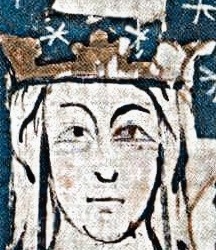

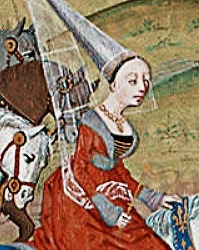


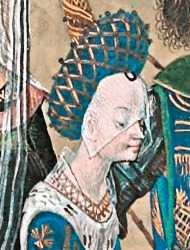


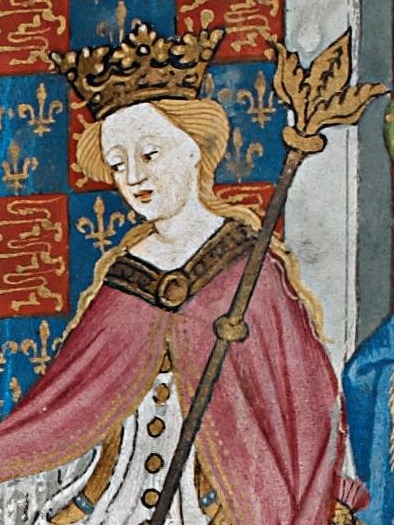

CONSORTS OF ENGLAND SINCE THE NORMAN INVASION (2/5) ♚
Eleanor of Castile (November 1272 - November 1290)
Margaret of France (September 1299 - July 1307)
Isabella of France (May 1308 - January 1327)
Philippa of Hainault (January 1328 - August 1369)
Anne of Bohemia (January 1382 - June 1394)
Isabella of Valois (October 1396 - September 1399)
Joan of Navarre (February 1403 - March 1413)
Catherine of Valois (June 1420 - August 1422)
Margaret of Anjou (May 1445 - May 1471)
Elizabeth Woodville (May 1464 - April 1483)
#my photoset.#history#historyedit#history edit#plantagenets#lancaster#house of lancaster#house of york#elizabeth woodville#margaret of anjou#catherine of valois#the king netflix#the white queen#joan of navarre#isabella of valois#anne of bohemia#philippa of hainault#isabella of france#margaret of france#eleanor of castile#royalty#royals#medieval history#medieval queens#queen consorts#war of roses#english history#historical royals#consorts of england#consorts of england and britiain.
139 notes
·
View notes
Quote
The common factor in the experiences of Eleanor of Provence, Isabella of France and Margaret of Anjou is marriage to a king who failed to fulfil his duties effectively, thereby losing the support of his people. A weak king provided the opportunity for his queen to exercise power on his behalf but this was regarded with deep suspicion by contemporary observers, invariably resulting in condemnation and criticism of her actions. Such judgements should therefore be seen as a reflection of contemporary attitudes and prejudices towards women in positions of power rather than any fair assessment of the abilities or shortcomings of the queens themselves.
Diana Dunn, "The Queen at War: The Role of Margaret of Anjou in the Wars of the Roses" in War and Society in Medieval and Early Modern Britain (ed. Diana Dunn, University of Liverpool Press, 2000)
#margaret of anjou#isabella of france#eleanor of provence#queenship#reputation and representation#historian: diana dunn
35 notes
·
View notes
Text

#eleanor of aquitaine#isabella of france#margaret of anjou#english history#medieval history#medieval confessions
26 notes
·
View notes
Text
people really do not know what they're talking about when it comes to Elizabeth Woodville's social status, huh?
#yes Elizabeth was without a doubt considered too low-born to be queen#no she was not a commoner and nobody actually called her that during her life (so I'm not sure why people are claiming that they did?)#Elizabeth's social status was not a problem in itself; it was a problem in the context of queenship and marrying into royalty#Context is important in this and for literally everything else when it comes to analyzing history. Any discussion is worthless without it.#obviously pop culture-esque articles claiming that she was 'a commoner who captured the king's heart' are wrong; she wasn't#But emphasizing that ACTUALLY she was part of the gentry with a well-born mother and just leaving it at that as some sort of “GOTCHA!”#is equally if not more irresponsible and entirely irrelevant to discussions of the actual time period we're studying.#Elizabeth *was* considered unworthy and unacceptable as queen precisely because of her lower social status#her father and brother had literally been derided as social-climbers by Salisbury Warwick and Edward himself just a few years earlier#the Woodvilles' marriage prospects clearly reflected their status (and 'place') in society: EW herself had first married a knight and all#siblings married within the gentry to people of a similar status. compare that to the prestigious marriages arranged after EW became queen#Elizabeth having a lower social status was not 'created' by propaganda against her; it fueled and shaped propaganda against her#that's a huge huge difference; it's irresponsible and silly to conflate the two as I've seen a recent tumblr post cavalierly do#like I said she was considered too low-born to be queen long before any of the propaganda Warwick Clarence or Richard put out against her#and the fact that Elizabeth was targeted on the basis of her social status was in itself novel and unprecedented#no queen before her was ever targeted in such a manner; Clearly Elizabeth was considered notably 'different' in that regard#(and was quite literally framed as the enemy and destroyer of 'the old royal blood of this realm' and all its actual 'inheritors' like..)#ngl this sort of discussion always leaves a bad taste in my mouth#because it's not like England and France (et all) are at war or consider each other mortal enemies in the 21st century#both are in fact western european imperialistic nations who've been nothing but a blight to the rest of the world including my own country#yet academic historians clearly have no problem contextualizing the xenophobia that medieval foreign queens faced as products of their time#and sympathizing with them accordingly (Eleanor of Provence; Joan of Navarre; Margaret of Anjou; etc)(at least by their own historians)#Nor were foreign queens the “worst” targets of xenophobia: that was their attendants or in times of war commoners or soldiers#who actually had to bear the brunt of English aggression#queens were ultimately protected and guaranteed at least a veneer of dignity and respect because of their royal status#yet once again historians and people have no problem contextualizing and understanding their difficulties regardless of all this#so what is the problem with contextualizing the classism *Elizabeth* faced and understanding *her* difficulties?#why is the prejudice against her constantly diminished & downplayed? (Ive never even seen any historian directly refer to it as 'classism')#after all it was *Elizabeth* who was more vulnerable than any queen before her due to her lack of powerful foreign or national support#and Elizabeth who faced a form of propaganda distinctly unprecedented for queens. it SHOULD be emphasized more.
3 notes
·
View notes
Text
Day 6: Yolande of Aragon
Yolande of Aragon (also known as Yolanda de Aragón and Violant d'Aragó.)
Born: 11 August 1381
Died: 14 November 1442
Parents: John I of Aragon and Violant of Bar
Duchess of Anjou and Countess of Provence
Children: Louis III, Duke of Anjou
Marie, Queen of France
René, King of Naples
Yolande, Countess of Montfort l'Amaury
Charles, Count of Maine
Yolande was born in Zaragoza, Aragon as the eldest daughter of John I of Aragon and his second wife Violant of Bar, granddaughter of John II of France.
In 1387 a marriage offer came through the mother of the King of Naples, Louis II.
At 11 years old she signed a document that disallowed any marriage promises made by ambassadors.
In 1395 another marriage offer came from Richard II of England.
After her father’s death, her uncle was convinced to marry Yolande to Louis. She was forced to retract her protest to the marriage.
Yolande and Louis were married on December 2, 1400 in Arles.
Despite her initial rejection and her husband’s illness, they had 5 children.
As a daughter of a king, she had a claim to the throne of Aragon after her uncle’s death without an heir. The laws at the time favored male heirs, thus after two years without a king they chose Ferdinand the son of Eleanor of Aragon and John I of Castile.
Yolande’s son, Louis, was the Anjou claimant to the throne, although his claim was excluded by the Pact of Caspe..
In the second phase of the Hundred Years' War, Yolande supported the French, particularly the Armagnacs. After the attack on the Dauphin of France by the duke of Burgundy, she and her husband refused the marriage of their son Louis to the duke’s daughter.
She met with the Queen of France to arrange the marriage of her daughter and the third son of the queen, Charles.
When Charles became the Dauphin and his mother worked against his claim, Yolande became a substitute mother for the teenager. She protected him against plots, funded and helped his cause. Yolande removed Charles from his parents' court and took him to her residence where he received Joan of Arc. After his marriage to her daughter Marie she became his mother-in-law and was heavily involved in the conflict of the House of Valois.
She succeeded in having him crowned.
As her husband was often away fighting in Italy, Yolande preferred to hold court in Angers and Saumur..
After the Battle of Agincourt in 1415, the Duchy of Anjou was threatened and Louis II had Yolande, their children and Charles moved to Provence.
On 29 April 1417, Louis II died leaving Yolande, aged 33, in control of the House of Anjou. Yolande acted as regent for her young son.
Yolande not only took care of the House of Anjou but also of Charles’s cause. Yolande supported Joan of Arc from the beginning and practiced political moves to ensure the success of Charles.
She retired to Angers and then to Saumur, where she continued to play a role in politics.
From at least 1439 onwards Yolande took care and prepared her granddaughter Margaret of Anjou for marriage.
She died on 14 November 1442 at the town house of the Seigneur de Tucé in Saumur.
She is described as "the prettiest woman in the kingdom", a wise and beautiful woman and her grandson Louis XI of France described her as "a man's heart in a woman's body”.
#women history#women in history#french history#joan of arc#margaret of anjou#anjou#15th century#medieval#medieval history#1400s#france
4 notes
·
View notes
Photo

Chateaux de Falloux, Segré-en-Anjou-Bleu, France
#art#design#architecture#chateau#castle#chateau de falloux#bourg-d'iré#france#countryhouse#luxurylifestyle#luxuryhome#luxuryhouse#history#style#anjou
95 notes
·
View notes
Text

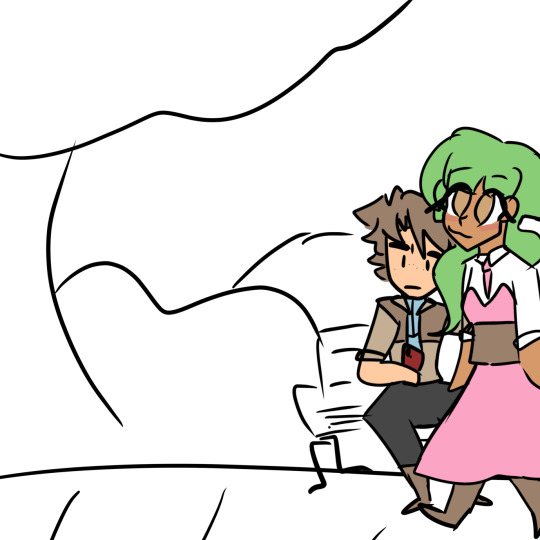


gaillard I’m packing and leaving immediately
#cfv#cardfight!! vanguard#kai toshiki#tokoha anjou#starbursts art#cfv comic#Yeah they are both in France at the same time pursuing vanguard what
15 notes
·
View notes
Text
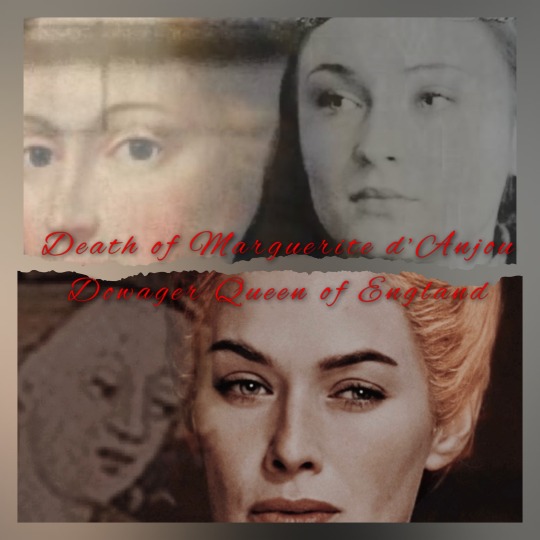
“24 August 1482
From the fairytale turrets of Saumur Castle, atop which golden fleur-de-lys glistened in the summer light, to the bulbous towers of Angers, where the château loomed on a cliff edge above the River Loire, the funeral cortege of Margaret of Anjou carried the queen on her last journey.
For six years she had been exiled back to the lands in which she grew up, a half-welcome guest of her father and King Louis, with little more than hunting dogs, books and a casket of relics to remind her of past glories. She was going now to rejoin her ancestors. Her last request to King Louis was that he would allow her to be buried with her parents: in their sepulchre at Angers Cathedral.
Since her capture at Tewksbury in 1471 Margaret's life had become one of solitary retirement. She had not stayed long in the Tower of London, although she must have been there when Henry was killed.
For a time she was kept at Windsor Castle, and by January 1472 she had moved to Wallingford in Oxfordshire, where her keeper was her old friend, Alice Chaucer, dowager duchess of Suffolk.
The women had once been close, Alice perhaps even having something of a maternal place in Margaret's heart. Since Suffolk's murder their lives had taken very different courses, and their enforced time together during Margaret's imprisonment cannot have been entirely happy.
Where Margaret had resisted the Yorkist regime with all her strength, Alice had come to terms with it even before Henry VI was first deposed. In 1458 Alice had overseen the marriage of her only child, John, to York's daughter Elizabeth. At the time this must have seemed a dangerous move, but her gamble had paid off. Her son still lived, a prominent member of the court of King Edward IV, and a king's brother-in-law.
Margaret, by contrast, had lost her family to the wars. Under house arrest, she was reliant on Edward to provide her with enough money to cover the expenses of herself and her servants.
One of those servants was Lady Katherine Vaux. Katherine had lost her husband, Margaret's old servant Sir William, at Tewksbury and the pair were bound so tightly together, whether through shared grief or the loyalty of many years' service, that Katherine stayed with Margaret until the end.
The pair of them probably appear in an image in the Guild Book of the London Skinners' Fraternity in 1475. Margaret wears an ermine-lined dark gown, her head covered like a nun, kneeling forward to read a religious text from her prayer book while a discarded crown and sceptre lie beside her. Behind Margaret is a more fashionably dressed woman, evidently in attendance on the queen, with her prayer book in her hands, her eyes more on her mistress than her prayers.
Both Katherine and Margaret were members of this fraternity in honour of the Assumption of the Virgin Mary who Margaret, like Henry, always particularly revered. As this image in the Skinners' record suggests, Margaret's imprisonment under Edward IV was not especially stringent.
Other members of the Skinners' Guild Fraternity included Queen Elizabeth Woodville and her ladies, so the fraternity would not have risked their ire by welcoming Margaret without their consent.
Margaret was provided with clothing, mostly black, at royal expense and had enough freedom not only to join this guild but also to enjoy the services of the dean of Edward's chapel in 1474. Having moved from Wallingford to London for most of the intervening years, in 1475 an international treaty between Edward and Louis XI was finalized that ransomed Margaret to Louis for £50,000.
In return for being able to return to her father's territories with a small pension from Louis, Margaret was forced to renounce all of her claims not only in England but also in France. The woman who had clung so tenaciously to her family's right to the English crown was now willing to give up virtually everything she owned to go home. After all, there was no one to inherit her titles or lands after her death. Thus, in November 1475, she was transferred into the keeping of Sir Thomas Montgomery to be escorted to France.
For several years Margaret lived in her father's castle at Reculée, near Angers, but when René died in 1480 she had to rely on one of his servants to provide her literary interests. Some years earlier she had commissioned the Burgundian memoirist Georges Chastellain to write Le Temple de Bocace, a consolation piece dwelling on the changing fortunes of the world and the unjust criticism that had been levelled at her.
Presumably she also occasionally rode or hunted through the verdant rolling fields and woodland surrounding her, enjoying at least one pastime from her old life. Margaret may have ridden from her modest home at Dampierre to the more imposing Château Montsoreau on the banks of the River Loire, over time she developed enough of a relationship with he castle's owner, Madame de Montsoreau, to gift her all of her hunting dogs shortly before her death - a high-status offering for a lady who had perhaps been a friend in the queen's last years.
In the summer heat of 1482 Margaret fell ill and, with the faithful Katherine Vaux at her side, she made her last will and testament on 2 August. Louis XI, who had once mocked her proud writing style, would have found little to displease him in the humble petitions that filled this short document.
'Sound of mind, reason and thought, however weak and feeble of body', Margaret asked to be buried in the cathedral church of St Maurice in Angers beside her parents, 'in whatever manner it pleases the king to ordain, or in another place if he prefers'.
She wrote that she did not have enough money to cover the cost of the funeral and suggested that Louis sold her remaining possessions to pay for her burial - as indeed he did.
And perhaps thinking of Lady Katherine, she 'recommend(ed] very humbly and affectionately' her 'poor servants... to the good grace and charity of the said King'. She had evidently lived on the charity of others for some time, and implored Louis, as her sole heir, to cover any remaining debts she had incurred.
Louis did as Margaret asked and had her honourably buried with her parents, but he insisted on reclaiming the hunting dogs that she had gifted to Madame de Montsoreau. 'You know (Margaret] has made me her heir, the king reminded Montsoreau in a letter written days before the queen actually died, 'and that this is all I shall get; also it is what I love best. I pray you not to keep any back, [or] you would cause me a terribly great displeasure’.
Even in death, Henry and Margaret were the pawns of others.”
JOHNSON, Lauren. “Life and Death of Henry VI”.
Fan cast: Sophie Turner as young Marguerite and Lena Headey as Queen Marguerite.
#margaret of anjou#Marguerite d’Anjou#reine marguerite d'angleterre#queen Marguerite#queen margaret of Anjou#queen margaret#house of lancaster#Plantagenet dynasty#wars of the roses#cousin’s wars#Katherine vaux#Alice chaucer#Edward iv#Elizabeth of York#duchess of Suffolk#Henry VI#king Henry VI#Louis XI of France#Louis XI
19 notes
·
View notes
Photo

St Louis, Bishop of Toulouse. He had been a Franciscan and died in 1297. Charles de Valois, who founded the Charterhouse of Bourg-Fontaine near Villers-Cotterêts. From a fresco painting on the main door of the church of this Charterhouse.
#royaume de france#maison de valois#maison d'anjou#charles de france#comte de valois#louis d'anjou#évêque de toulouse#anjou sicile#regno di napoli#fleur de lis
5 notes
·
View notes
Text

Greetings from La Possonnière, Anjou region of France
French vintage postcard
#vintage#tarjeta#france#old#briefkaart#anjou#postcard#greetings#la#photography#la possonnière#region#postal#carte postale#sepia#ephemera#historic#french#ansichtskarte#possonnire#postkarte#postkaart#photo
8 notes
·
View notes